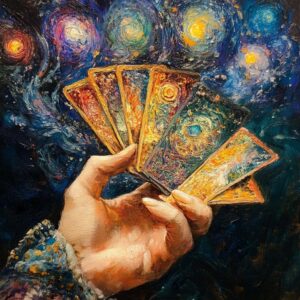
Kabbalah: Jewish Mysticism and the Path to Divine Union
Kabbalah is Jewish mysticism, offering a unique path to understanding the divine. At its core, Kabbalistic thought centers on the mystic's aspiration to achieve a mystical, experiential, and cognitive union with the divine, aiming to bridge the gap between the material world and the divine. This is achieved through the metaphor of the Tree of Life, which maps a path from the divine to creation, providing a blueprint for expression and guiding the journey between heaven and earth.
The root of the word Kabbalah means "to receive." It is a tradition passed down orally, with teachings transmitted from teacher to student. Despite receiving knowledge from a teacher, the wisdom and understanding of this knowledge come directly from the divine. Kabbalah is a system that teaches us to become vessels capable of receiving the divine flow.
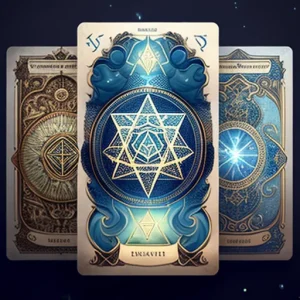
Kabbalah is an oral tradition with undocumented origins. It has deep roots in Jewish thought and draws from ancient Hebrew mysticism, including the literature of the Hekhalot and Merkavah. The main development and dissemination of Kabbalah occurred in Provence (Southern France), Northern Spain, and the Middle East during the late 12th and early 13th centuries. The first Kabbalistic text is the "Sefer Yetzirah" (Book of Creation), traditionally attributed to Abraham.
Judaism historically opposed divination using cards, but practitioners of practical Kabbalah viewed Tarot cards as embodying the spiritual essence of the individual, representing knowledge and perception. Kabbalah established correspondences between the Tree of Life and the Tarot cards, even creating its own unique set of cards. These correspondences align the twenty-two Hebrew letters with the twenty-two branches of the Tree of Life and the twenty-two Major Arcana cards. The ten Sefirot and their attributes correspond to the ten numbered cards of the Minor Arcana, and the four suits correspond to the four worlds in Kabbalah.
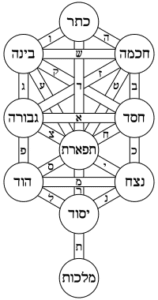
In Judaism, divination using cards was traditionally opposed. However, practitioners of practical Kabbalah viewed Tarot cards as embodying the spiritual essence of the individual, with the cards representing knowledge and perception. Kabbalah established correspondences between the Tree of Life and the Tarot cards, even creating its own unique set of cards. These correspondences align the twenty-two Hebrew letters with the twenty-two branches of the Tree of Life and the twenty-two Major Arcana cards. The ten Sefirot and their attributes correspond to the ten numbered cards of the Minor Arcana, and the four suits align with the four worlds in Kabbalah.
Since ancient times, humanity has been symbolically linked to the Tree of Life, with its roots in the earth and its branches reaching towards the heavens. In Jewish Kabbalah, the Tree of Life reflects the work and mysteries of creation. The ten Sefirot are structured into three columns: the Column of Mercy, the Column of Judgment, and the Central Column.
The Pillar of Mercy, Netzach, and Wisdom represents the masculine aspect characterized by intellect. It is called the Pillar of Compassion. This is the pillar of energy flow, masculine and positive.
The Pillar of Judgment, Binah, and Severity represents the feminine aspect characterized by emotions. It is feminine and negative. (Here, "negative" should be interpreted in terms of "void," similar to how the womb is a void that receives and nurtures the embryo.)
Keter, Tiferet, Yesod, and Malkhut connect the right pillar (masculine) with the left pillar (feminine), facilitating the flow between them. They represent union, love, fertility, and creativity. This pillar embodies awareness, intellect, and natural flow. The central pillar is the pillar of harmony, serving as the pillar of integration. Its task is to recognize the darkness in the world and within ourselves and integrate it with the light. The pillar of harmony is where these energies achieve perfect balance.
Sefirot is a concept from Kabbalah, and they can be understood as vessels that express divine will in our world. The Sefirot are hinted at in the Book of Job, in Midrash, and in the Mishnah in the concept of "the world was created through ten utterances," which corresponds to the number of Sefirot. The Tree of Sefirot is divided into worlds of giving (Keter, Chokhmah, and Binah) which signify the potential for abundance descending into the worlds of receiving (Chesed, Gevurah, Tiferet, Netzach, Hod, Yesod, Malkhut) that exist in their practical essence.
The first three Sefirot, known as the "Three Upper," are connected in a triangle at the top of the Tree of Sefirot and are distinct from the lower Sefirot energetically as they are the central source from which divine abundance flows to the lower Sefirot. In Kabbalistic wisdom, the "Three Upper" (the upper triangle) are referred to as "Mochin" (the intellectual faculties), while the remaining Sefirot are referred to as "Middot" (the attributes).
Keter, The highest Sefirah, and in its essence, divine, is beyond human comprehension and thus spiritually inaccessible. It represents divine providence and abundance. This Sefirah connects the higher worlds, the Infinite, with the lower Sefirot. It expresses the divine will. In this Sefirah, all potentials drawn from the light of God exist; everything is possible and achievable, but not by human effort.
Chochmah, The second Sefirah is masculine. It is the Sefirah of wisdom, receiving light from the Sefirah of Keter. It represents the initial expression of the energy emanating from Keter and provides order and definition to the formation of primary ideas. Chochmah is the starting point of conceptual illumination that continues into the process of world-building.
Binah, The third Sefirah is feminine, nourished by Chochmah. Its role is to give substance to wisdom and discern between the essential and the secondary. Binah represents the beginning of the process of deriving understandings before bringing the idea from potential into action. It symbolizes a fine distinction of hidden details beneath the surface.
The Sefirah of Chesed represents the immense power of love. It signifies boundless giving from the light of abundance that surrounds and emanates from it towards all. Essentially, it contains the first light of creation and radiates pure, positive energy of a generous and unconditional willingness to give. The love in Chesed is not earthly love but spiritual love.
Gevurah, Located parallel to the Sefirah of Chesed, Gevurah is known as the Sefirah of Judgment. Its role is to act as a restraint to the overwhelming flow of abundance and giving that emanates from Chesed. Gevurah represents the beginning of the material world, and without balance with Chesed, it can become negative. One who fails to balance themselves between Chesed and Gevurah will find themselves in a state of constant difficulties and frustrations.
Tiferet, Located beneath Keter in the central column, Tiferet connects the opposing forces of Chesed and Gevurah, and its role is to create harmony between Judgment and Mercy. It serves as the moral center and teaches when to give and when to receive. Positioned in the central line of the ten Sefirot, Tiferet represents the completeness of the soul. It balances the masculine and feminine aspects and is where the idea begins to be actualized.
Netzach, Located on the right column below Chesed, Netzach reflects the desire to give. What emerges from Chesed is expressed in Netzach, which acts as a conduit for channeling abundance into our physical world. Netzach represents the masculine aspect responsible for nurturing creative processes so they can be brought to fruition.
Hod, Located on the left column below Gevurah, Hod represents the physical application of processes that were only potential in thought. Essentially, it condenses all our desires into a logical and precise action, taking into account cost-benefit considerations.
Yesod, Located in the center column, above Malchut, Yesod collects awareness, insights, and considerations with one goal: to balance, direct, and channel everything accumulated within it to Malchut. In Yesod, there is no application of processes; its purpose is to instill in us the will to live.
Malchut completes the ten Sefirot. It represents the physical world and embodies material action. It is the place where everything takes on tangible and concrete form.
The ten Sefirot represent complete balance in the universe and within the individual, both mentally and physically. To understand the true meaning of the Tree of Life, one must dedicate their full strength and soul to grasp the secret of life. The Tree of Sefirot serves as a map that details the entire act of creation, down to the finest details of human life. The term "Tree of Life" appears only once in the Torah, in the Book of Genesis (3:24): "So He drove out the man; and He placed at the east of the Garden of Eden cherubim, and a flaming sword which turned every way, to keep the way of the Tree of Life."
All ten Sefirot are interconnected by twenty-two pathways, corresponding to the number of letters in the Hebrew alphabet.
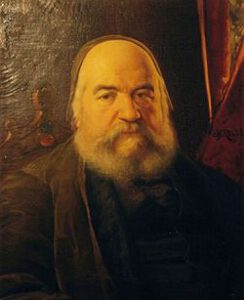
The most important figure among French mystics who connected the world of Tarot to the world of Kabbalah is Eliphas Levi. This is the pen name of Alphonse Louis Constant (February 8, 1810 – May 31, 1875), a theorist of magic. He found a correspondence between the twenty-two Major Arcana cards and the twenty-two letters of the Hebrew alphabet, which Kabbalah assigns symbolic and mystical meanings. The ten numbered cards of each suit correspond to the ten Sefirot, and the four suits themselves correspond to the four letters of the Tetragrammaton. According to Levi's perspective, the cards and their corresponding Kabbalistic principles represent hidden forces that can be utilized for magical purposes.
A legend tells that the Holy One, Blessed be He, wanted something to connect with Him and decided to create something that was not Himself. But since He encompassed all time and space, there was no place for anything else. He first had to contract Himself to create a void. This contraction is called Tzimtzum. Then God sent a ray of light into the dark void that was created.
This ray of light can be compared to the letter Vav that extends to the bottom line. Vav represents the energy that extends all the way to creation. By sending this ray of light into the darkness, God created others. This is the connection between heaven and earth.
From this ray of light, the four worlds emerged. From the four worlds came the ten Sefirot. And from the ten Sefirot came the paths of the Tree of Life. Thus, creation was made. This legend also presents two of the twenty-two letters of the Hebrew alphabet: Yud and Vav. These two letters are part of the Divine Name, the third letter being Heh. The Divine Name is spelled YHVH, which means "to be."
The four worlds derive from the extension of light into the darkness along the Vav. These worlds create a hierarchy descending from the most ethereal and spiritual energy to the most material and tangible, from perfect divine unity to a perfect worldly variety. The four worlds describe the steps through which divine energy condenses into creation.
The first world is known as Atzilut. This world is the highest of the four worlds and arises directly from the ray of light, making it the closest of the revealed worlds to the divine. It is associated with the element of fire, corresponding to the suit of Wands.
The second world is Beriah. Beriah is associated with the element of water, corresponding to the suit of Cups.
The third world is Yetzirah. Yetzirah is associated with the element of air, corresponding to the suit of Swords.
The fourth and final world is Asiyah. This world is associated with the element of earth, corresponding to the suit of Pentacles.

Although there is no evidence that Tarot has its origins in Kabbalah, no one can deny that Edward White's Tarot is influenced by Jewish symbols. On either side of the High Priestess are two columns representing the entrance to the Temple, Jachin and Boaz. The High Priestess holds a document in her hand with "TORA" written on it. In the Lovers card, there are symbols of the Tree of Knowledge and the Tree of Life. In the Wheel of Fortune card, the Divine Name and the word "TORA" appear, and in the Fusion card, the Divine Name is also present.
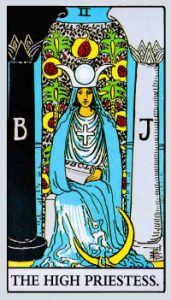 |
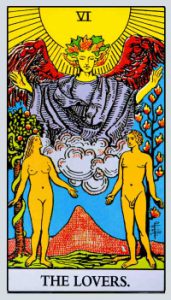 |
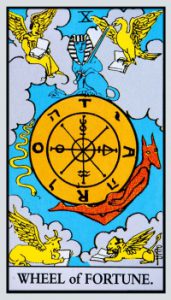 |
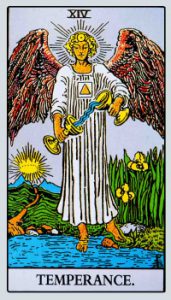 |
Crowley, in The Book of Thoth, went so far as to claim that "the Tarot was designed as a practical tool for Kabbalistic calculations."
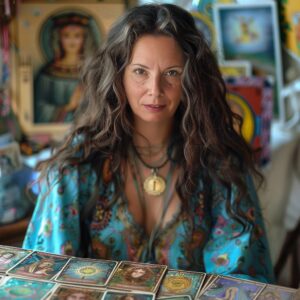
Orit Raphael, Tarot Reader for Personal Guidance, Insights, and Messages